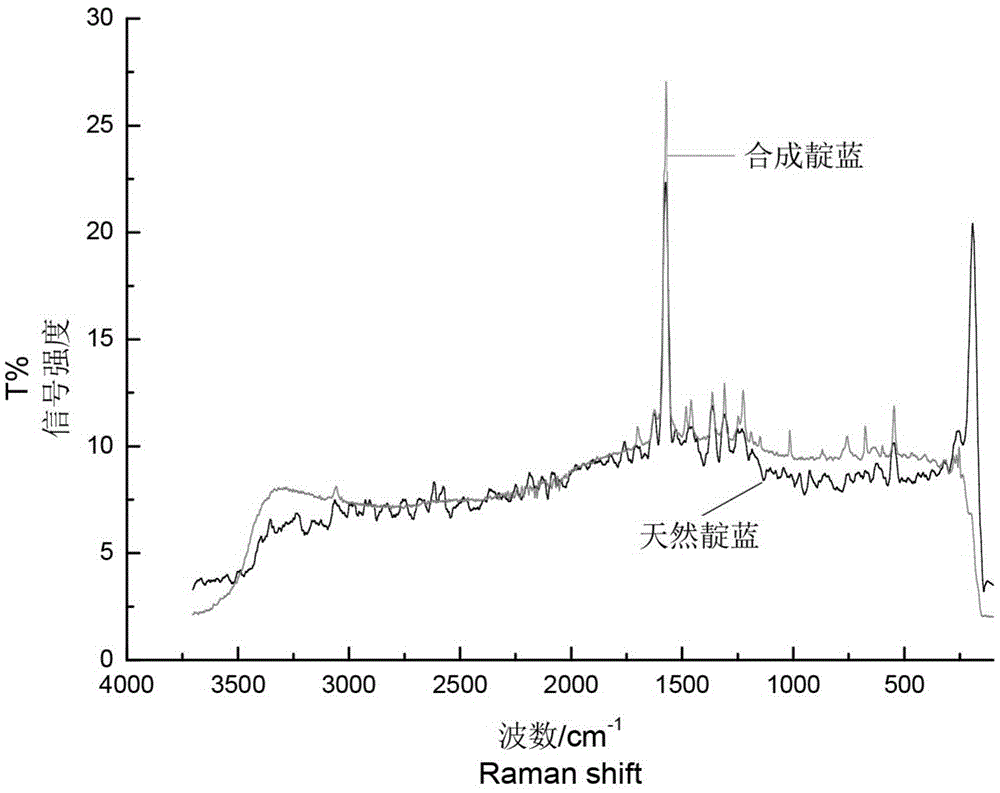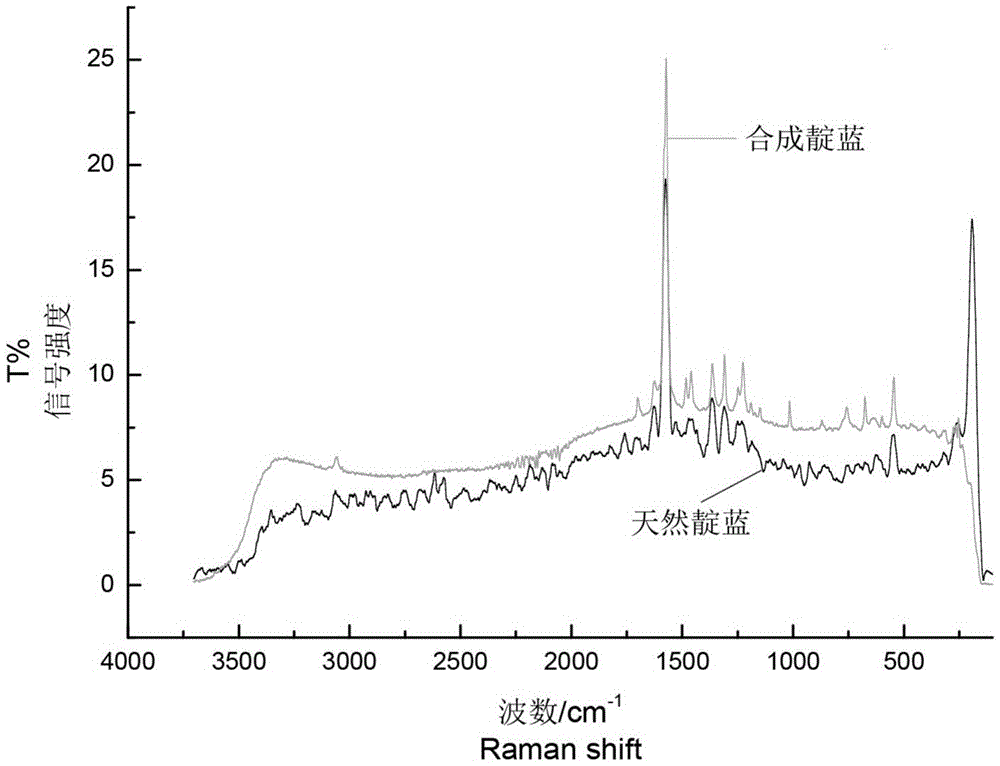Raman spectrum discriminating method of natural dyeing silk fabrics
A natural indigo and Raman spectroscopy technology, applied in the field of chemical dye identification, can solve the problems of single identification method, low identification degree, fabric damage, etc., and achieve the effect of enhancing the intensity of incident excitation light, easy operation and reducing loss
- Summary
- Abstract
- Description
- Claims
- Application Information
AI Technical Summary
Problems solved by technology
Method used
Image
Examples
Embodiment
[0038] (1) Indigo dyeing: use vat dyeing method to make natural indigo dye dye silk fabric, the dyeing process and formula are as follows:
[0039] Table 1 Natural indigo dyed silk fabric process and formula
[0040]
[0041] (a) Reduction: First determine the bath ratio as 1:50, then accurately weigh 5% (o.w.f) of natural indigo dye, Na 2 S 2 o 4 1.2g / l, Na 2 CO 2 0.6g / l, add natural indigo dye into the dyeing cup, and add water and mix thoroughly; then first add 2 / 3 Na to the dyeing cup 2 S 2 o 4 , 2 / 3 Na 2 CO 2 and 1 / 3 of water, the initial temperature in the dyeing cup is 20°C, then gradually increase the temperature to 50°C, the heating rate is 5°C / min, and dry the vat for 10 minutes at 50°C; then add the remaining 1 / 3Na 2 CO 2 , 1 / 3Na 2 S 2 o 4 and 2 / 3 of water, and dry the tank at 50°C for 30 minutes to obtain a transparent yellow-green dyeing bath.
[0042] (b) Oxidation: take 2.0g of silk fabric and dip-dye it completely into the dye bath, fully oxid...
PUM
 Login to View More
Login to View More Abstract
Description
Claims
Application Information
 Login to View More
Login to View More - R&D
- Intellectual Property
- Life Sciences
- Materials
- Tech Scout
- Unparalleled Data Quality
- Higher Quality Content
- 60% Fewer Hallucinations
Browse by: Latest US Patents, China's latest patents, Technical Efficacy Thesaurus, Application Domain, Technology Topic, Popular Technical Reports.
© 2025 PatSnap. All rights reserved.Legal|Privacy policy|Modern Slavery Act Transparency Statement|Sitemap|About US| Contact US: help@patsnap.com



